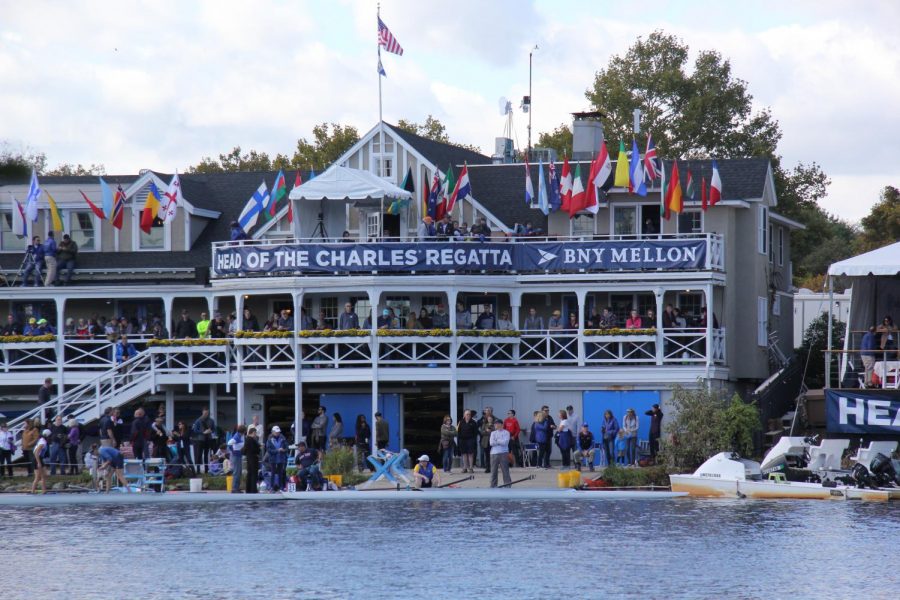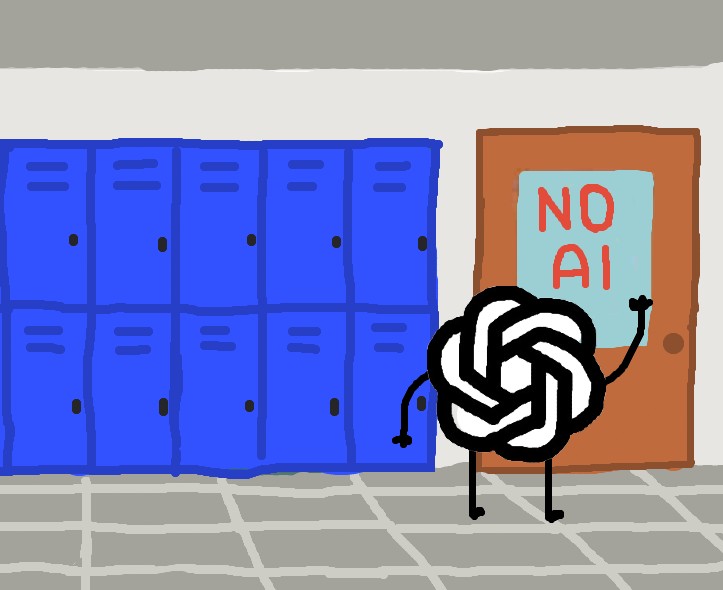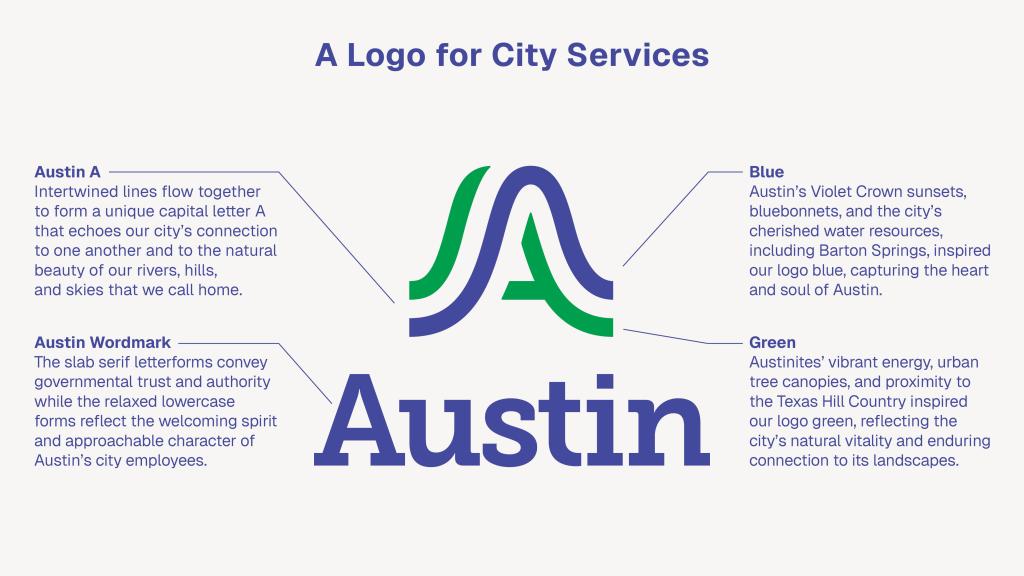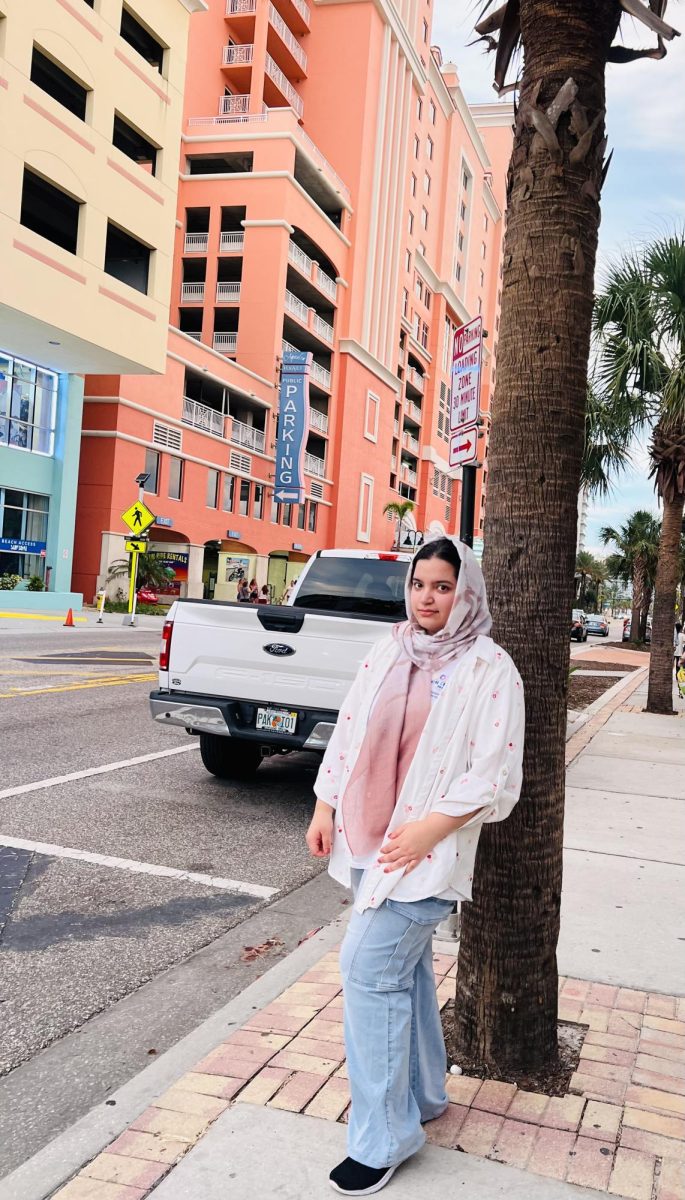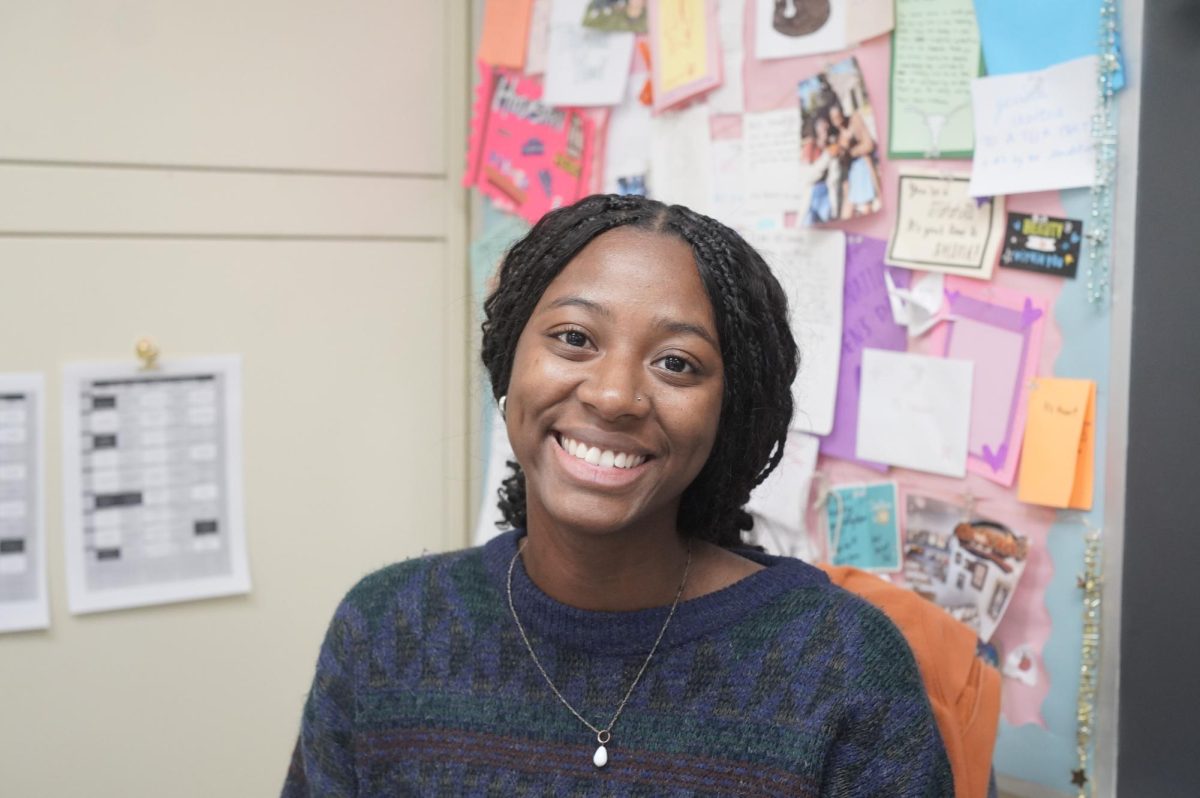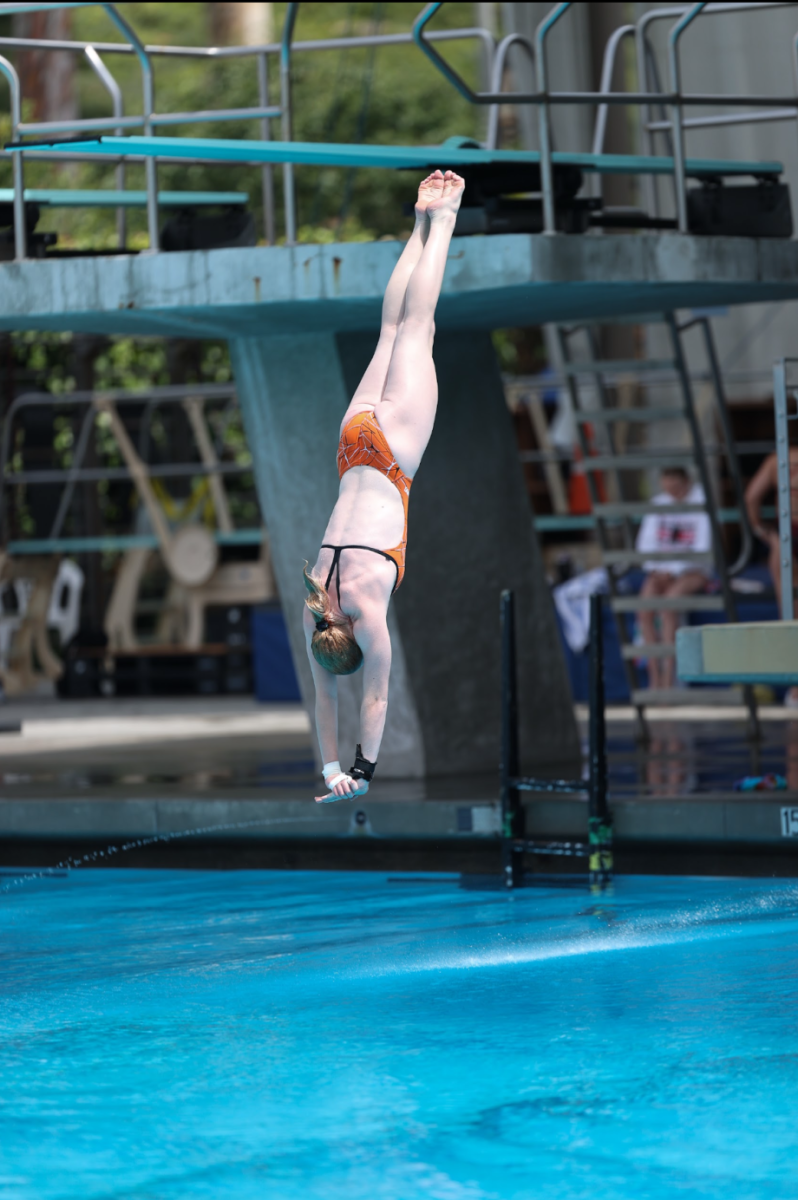If you ask anyone who lives in the East what Head of the Charles is, you won’t be met with the vacant gazes you get in Austin. They’ll tell you (correctly) that Head of the Charles is not only the largest two day regatta in the U.S., but in the world. Held annually in Boston for 54 years, Head of the Charles brings together more than 10,000 rowers from over 800 different clubs from all around the U.S. Approximately 5,000 meters long (or 4,800 meters if you steer a good point) Head of the Charles is the most coveted regatta for every rower and always draws enormous crowds to watch the racers (even though any rower will admit that rowing is not a particularly exciting spectator sport).
This October, after a month of stressful selection marked by both sweat and tears, rowers from all across the country traveled to Head of the Charles to race. Out of the nine varsity girls selected from Texas Rowing Center to travel to Boston, two McCallum students were among those chosen. Senior Raiya Myren and I were selected to race, Myren in the single, and me to bow the quad.
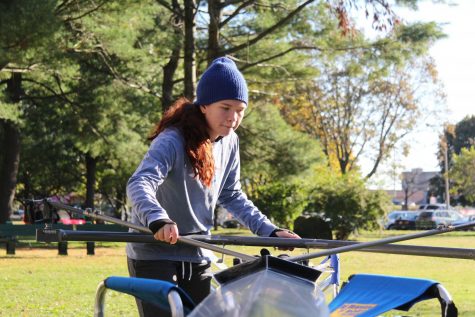
We traveled to Boston on Oct. 17, and got to spend a night relaxing before we had to start practicing and preparing for the race on Sunday. Friday was our busiest day of all. All of the us had to be at the three-mile long race course by 9 a.m. to get our boats off the trailer that had arrived the night before, after the long drive from Austin to Boston. Luckily for us, the trailer had arrived without any drama (one time one of our trailers burned down taking at least 10 boats with it, and another time the trailer arrived the night before our race, at about 9, when it was supposed to have been there three days prior). We unloaded our three boats off the trailer, and rigged them before we went out on the course for a long practice row to get our swing back and to get familiar with the course that only half of us had seen before.
We were all expected to row down the course about two times, to get practice time in and to give our coxswains (the little people who sit in the front of the boat) a chance to work on steering the course. Raiya launched earlier than me, as it would take her longer to row the course in her single. The first round of my quads practice row didn’t go very well, except for Riley (our coxswain) steering around the bridges. We were all a little flustered and overwhelmed by all the boats and the stress of officials yelling at us to do stuff. But our second round went much better, and Riley got to practice her steering around both bridges again, even though we cut the row a little short and didn’t go all the way down the course the second time. In total, we rowed around 20,000 meters. Friday definitely helped us all get comfortable on the course, and get our confidence back.
Saturday was our free day. It was beautiful out, with minimal wind and mild temperatures and the sun shining all over the city. We were encouraged to stay off our feet, but to still explore the race course and Boston. That morning I went to Weeks bridge, hoping to see a collision; either of boats running into the bridge or into each other. Weeks bridge, the two thousand meters down mark coupled with a very tight turn that you have to immediately straighten out from to prepare for the next bridge less than 500 meters away, it’s easy to understand why Weeks is the location of most crashes, and I was hopeful that morning, as there were eights and singles coming down (the hardest boats to steer in my opinion). Unfortunately, I was disappointed. I only saw two crashes the entire weekend; two collegiate fours collided after Elliot (the second hardest turn and the beginning of the sprint), and an eight ran into Weeks Bridge on Sunday after being forced to yield and move over by two other, faster boats that had come up behind them. And the eight only got oars caught on the bridge. It was very anticlimactic.
Saturday night was comprised of everyone freaking out individually about our races the next day. Even after we had team discussions about motivation and race plans for the next day so we would all know what to expect, we were all internally (and some externally) panicking. Head of the Charles is the biggest, most important race of the fall season, and we all wanted to prove that we deserved to be here and, more importantly, we didn’t want to let each other down.
We didn’t get near as lucky with the weather on Sunday. Saturday was nice and pleasant, and Sunday was not. The winds reached 20 miles per hour, and it was around 45 degrees when we were racing, which is some of the worse racing weather you can have.
Raiya was the first to race at 8:37 am Sunday morning. After a late night of planning and packing up to leave the next day less than 4 hours after her race, Raiya had to get to the course at 6:00 am to get ready for her race. I had to get there at 8:00, so I had some extra time to get ready the next morning (but also more time to get nervous for my race).
While we were helping the other four girls launch their four, Raiya rowed by. She was starting right smack in the middle, 13 out of 31, a respectable place, with both people to pass and people to push off of. She was in her sprint as she passed us, and she looked extremely strong and talented. She kept her calm the entire race, which is hard to do in a team boat, much less a single.
After the race, our coach told her that she had raced against national champions from not only the United States, but also Canada and Europe. Her placing of 27 was perfectly respectable, and more importantly, she got to say that she had raced Head of the Charles in a single, which has already begun to give her major street cred. She stayed calm and collected, pulled as hard as she could while steering the boat around an extremely complex course, and managed to motivate herself.
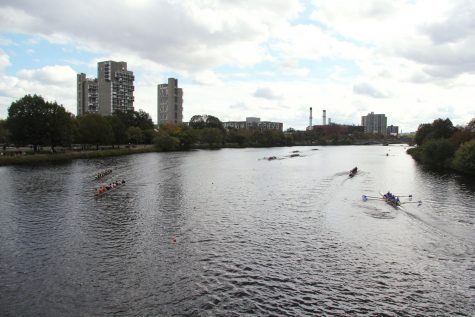
My race started at 9:58. We had to launch about an hour before, because the course was so crowded by all the other racers. As we went down the course we managed to get our swing, and we started to relax. We even were able to cheer for the four as they went down the course. But by the time we got to the starting line, we were all very nervous, which wasn’t helped by all the officials yelling contrasting information at us. I was freaking out even before we got there, and I’m very lucky that I wasn’t the one who had to be in charge, or I would have been panicking even more. After we turned around and were waiting for our time to pull up to the starting line, I had to take my sweatshirt off, and sit around in the cold and wind in a tank top and shorts. Needless to say, I was violently shaking by the time we reached the starting line.
Our start went well. We had been preparing for a short, quick start, which came in handy. Unfortunately, the cold and wind wasn’t exactly conducive for racing. Once we came around the first bridge, we got hit by a huge gust of wind, and didn’t stop getting hit by it for more than half of the race. We pushed hard all the way through Weeks, and Riley perfectly executed the turn, and somehow we were halfway through the race.
Finally, we began the turn at Elliot that meant we were going into the last 1,000 meters of the race. Riley was keeping it tight to the buoys as she had been instructed to. But suddenly, something happened.
Catching a crab is one of the first, most crucial things you learn in rowing. If you keep your oar in the water for too long, or can’t get your blade out, your blade can get stuck in the water and hit you in the chest while the boat continues to move. It means that your boat will slow down or stop, or, the worst alternative- you could been thrown out of the boat (an ejector crab- horrible but hilarious to see).
As we passed into the last 1,000 meters, Avery caught a crab. We all had to stop as she struggled to get her oar out of the water, and we were all internally screaming. We couldn’t come back from this. Once you catch a crab, you’re done for.
We managed to start back up again reasonably quickly. We were all so terrified of the crab messing up our race, we dropped 10 splits (we went a lot faster than before). I thought that it was good that my parents would be able to see this, not just the crab.
We flew out from under Elliot and passed into the last 500 meters. Everything hurt, and I was extremely hot, even though I wasn’t wearing a jacket. This last bit was the most painful of all. Our legs were screaming, and, though we only had 500 meters left, a sprint basically, we had already gone at least quadruple that.
My quad ended up getting 17th out of 42 entries. We managed to get in the top half, which was our overall goal. Our coach was very proud with how hard we tried, and how well we did. It was an amazing experience all around.


